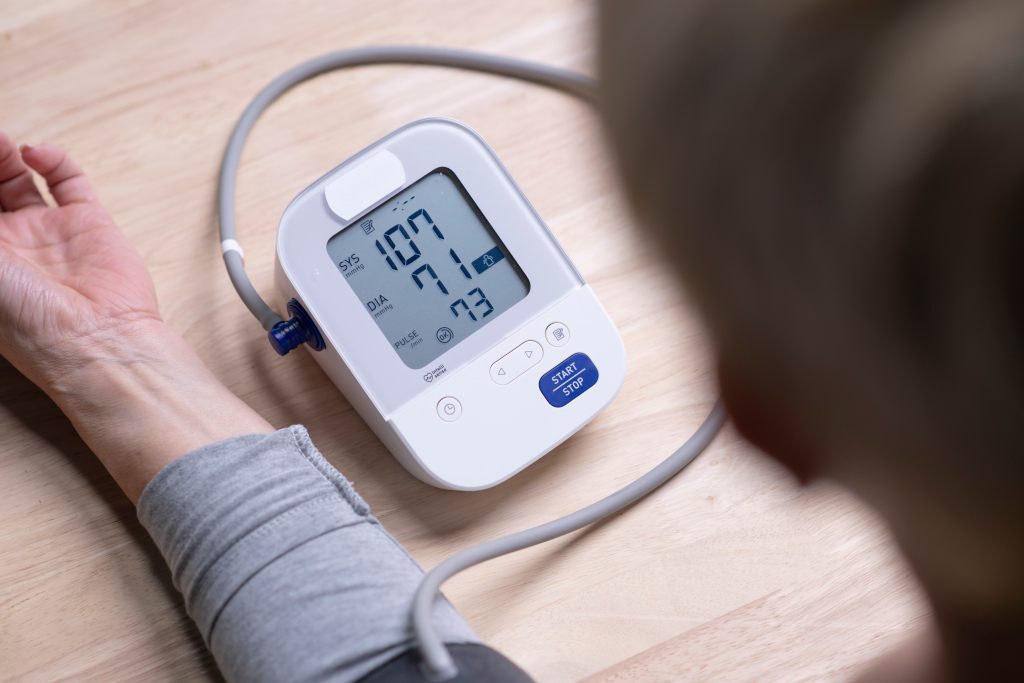You’ve been there before: sitting in a quiet room, sleeve rolled up, that strange cuff tightening around your arm like a python. You glance at the screen. The numbers appear: 146 over 92. The nurse frowns. “A little high today,” they say gently.
Your stomach sinks. Is it stress? Diet? A sign of something worse?
But here’s the surprising truth: the problem might not be your body — it might be the machine itself.
The secret life of the blood pressure cuff
A sphygmomanometer (yes, we know — it sounds like a dinosaur) is the device used to measure your blood pressure. But it’s more than just a machine. It’s a precision tool… and even small mistakes in how it’s used can give you wildly inaccurate readings.
Here’s the comforting part: once you know how it works, you can start getting results you can trust.
How a blood pressure machine actually works
Let’s break it down.
- When the cuff inflates, it squeezes your upper arm, temporarily stopping the blood flow through your brachial artery.
- As the cuff slowly deflates, the machine (or a trained ear, in manual devices) “listens” for the return of blood flow.
- The first sound signifies your systolic pressure (the pressure when your heart beats).
- The last sound heard before silence indicates your diastolic pressure (the pressure when your heart rests between beats).
Manual versions use a stethoscope and a gauge. Digital versions handle it all electronically, using sensors and what’s called the oscillometric method — detecting vibrations in your arterial wall.
But here’s where it gets tricky…
Back in 2017, a Canadian health study revealed that nearly 30% of home blood pressure monitors gave readings that were off by more than 10 mmHg in either direction.
That’s the difference between “you’re fine” and “you need medication.”
Even errors in cuff placement, arm position, or speaking during the measurement can skew your results.
Getting an accurate reading: do this
Want to trust what your numbers say? Follow these simple rules.
- Use the right cuff size — it should cover 80% of your upper arm’s circumference. Too tight or too loose = bad data.
- Keep your arm at heart level, resting on a flat surface. Don’t let it dangle at your side.
- Don’t talk, text, or watch TikToks during the test. Sit still and breathe calmly.
- Measure at the same time each day — preferably morning, before coffee or stress kicks in.
- Take 2–3 readings and average them, waiting at least one minute between each.
Bonus tip: Test your machine against a pro
Bring your device with you to your next appointment. Ask your doctor to compare it with their calibrated monitor. You’d be surprised how often they differ.
The verdict: You have more control than you think
We often treat health monitoring like black magic — push a button, trust what it says. But blood pressure readings aren’t absolute truths; they’re interpretations of signals from your body.
When you understand how the machine works — and how to use it correctly — you stop guessing. You start making real, informed choices about your health.
So next time that cuff tightens, you’ll know what’s happening, and more importantly, how to make it work in your favor.
Closing thought: Knowledge is power (and peace of mind)
Most people don’t realize how easy it is to misread blood pressure. It’s not their fault — no one teaches this stuff in school. But now, you’ve got the inside scoop.
Take control. Pay attention to how, when, and where you measure. And remember: your numbers are only as good as the method behind them.
Blood pressure might be silent, but it doesn’t have to be a mystery.




Thanks for sharing. I read many of your blog posts, cool, your blog is very good.